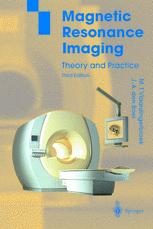

Most ebook files are in PDF format, so you can easily read them using various software such as Foxit Reader or directly on the Google Chrome browser.
Some ebook files are released by publishers in other formats such as .awz, .mobi, .epub, .fb2, etc. You may need to install specific software to read these formats on mobile/PC, such as Calibre.
Please read the tutorial at this link: https://ebookbell.com/faq
We offer FREE conversion to the popular formats you request; however, this may take some time. Therefore, right after payment, please email us, and we will try to provide the service as quickly as possible.
For some exceptional file formats or broken links (if any), please refrain from opening any disputes. Instead, email us first, and we will try to assist within a maximum of 6 hours.
EbookBell Team

4.1
100 reviewsOver recent years Magnetic Resonance Imaging has become a well-established textbook on basic MRI technique. A comprehensive survey of the analytical treatment of MRI physics and engineering, it gives readers the background needed to cope with the problems that arise when applying MRI in medicine or when (sub)systems or sequences for new applications are designed. Special attention is paid to the treatment of intrinsic artifacts of the different sequences, which can be described in a mathematically uniform way for the different scan methods. The book contains many images, especially showing specific properties of the different scan methods. The methods discussed include RARE, GRASE, EPI and Spiral Scan.
The second edition was expanded in response to recent developments. In various places the treatment was refined. In particular, the chapter on motion and flow was expanded, and a new chapter was added, describing the configuration theory and its use in the understanding of multipulse sequences such as BURST, TSE, and FFE. This edition also offered an overview by A.L. Luiten of the early history of MRI imaging.
The additions in the third edition were prompted by the development of stronger gradient and new RF coil systems that have led to a shift of attention in the practical clinical use of some sequences such as Balanced FFE and q-space diffusion imaging and SENSE.